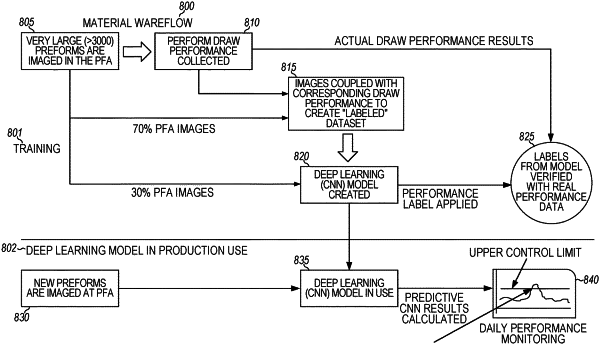| CPC G06N 3/08 (2013.01) [G06N 3/067 (2013.01); G06N 3/084 (2013.01); G06V 10/774 (2022.01); G06V 10/82 (2022.01)] | 19 Claims |

|
1. A method for analyzing optical fiber preforms comprising:
accessing a stored dataset comprising, for each of multiple reference optical fiber preforms, a plurality of images of the reference optical fiber preform labelled with performance data of optical fiber drawn from the reference optical fiber preform, wherein each image represents a different portion of the reference optical fiber preform; and
training a convolutional neural network (CNN), the training comprising providing data to the convolutional neural network (CNN), the data comprising the stored dataset or a training dataset derived from the stored dataset, the convolutional neural network (CNN) processing the data to predict a number of fiber kilometers lost due to diameter upset in the reference optical fiber preform,
wherein the convolutional neural network (CNN) comprises:
an input layer;
an output layer;
a plurality of hidden layers comprising a first layer connected to the input layer, a second layer connected to the output layer and one or more intermediate layers between the first layer and the second layer, each of the input layer, hidden layers and output layers comprising a plurality of artificial neurons;
a plurality of convolution blocks, wherein a first one of the convolution blocks is configured to receive input visual data;
a plurality of dense layers following the plurality of convolution blocks, the plurality of dense layers configured to generate a feature vector; and
a random forest classifier configured to classify the reference optical fiber preforms into the two or more categories using the feature vector.
|